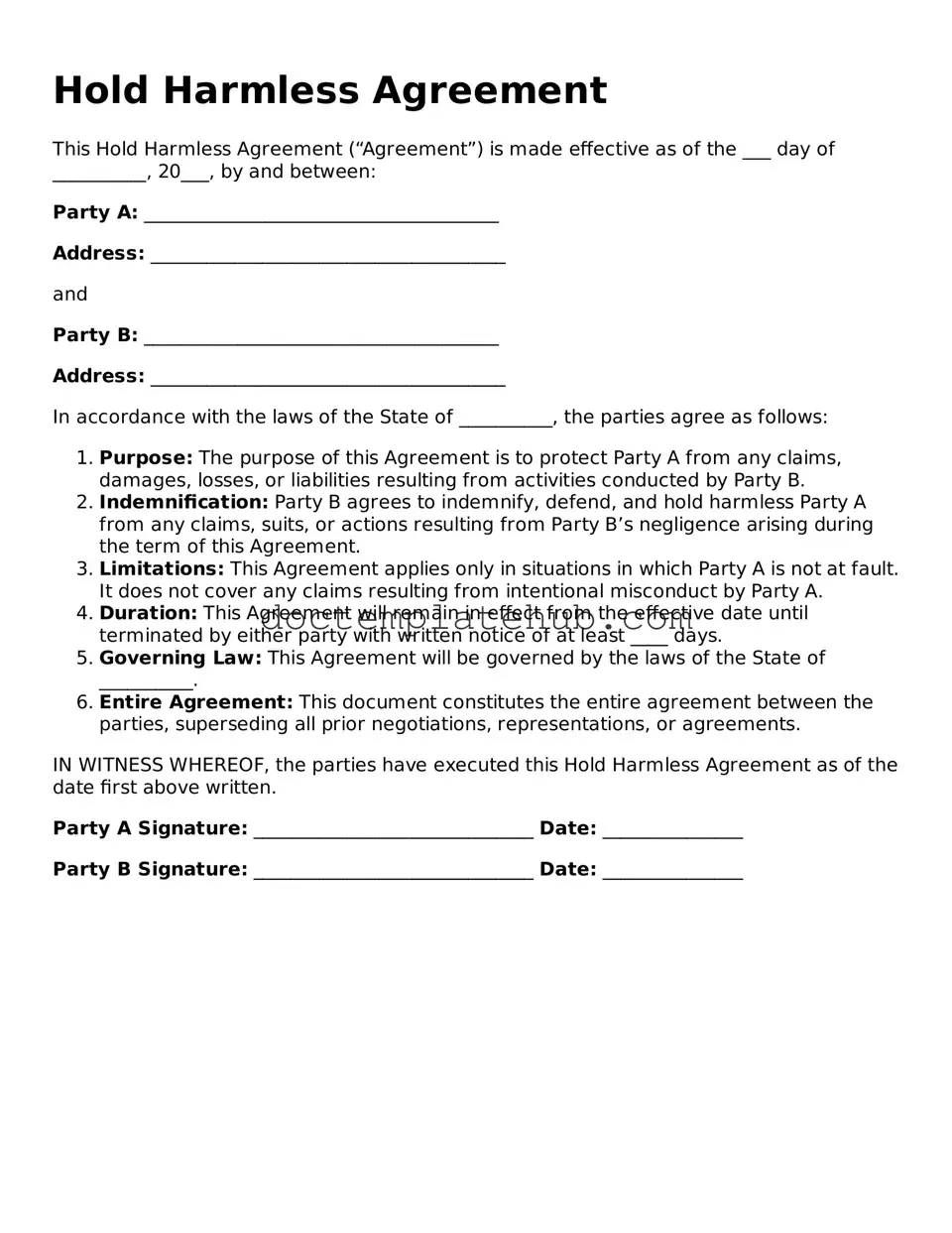What is a Hold Harmless Agreement?
A Hold Harmless Agreement is a legal document that protects one party from liability or claims arising from specific activities or situations. By signing this agreement, one party agrees not to hold the other responsible for any potential damages, injuries, or losses that may occur. This type of agreement is often used in various contexts, such as rental agreements, event planning, or contractor work.
Who typically uses a Hold Harmless Agreement?
Various individuals and organizations use Hold Harmless Agreements. Common users include property owners, event organizers, contractors, and businesses. For instance, if a property owner rents out their space for an event, they may require the event organizer to sign a Hold Harmless Agreement to protect themselves from liability in case of accidents or injuries during the event.
What are the key components of a Hold Harmless Agreement?
A Hold Harmless Agreement generally includes several important components. These typically involve the names of the parties involved, a clear description of the activities or situations covered, and the specific liabilities being waived. Additionally, it may outline the duration of the agreement and any conditions under which it may be voided. It is crucial that the language used is clear and understandable to all parties.
Is a Hold Harmless Agreement legally binding?
Yes, a Hold Harmless Agreement can be legally binding, provided it meets certain criteria. For the agreement to be enforceable, it must be signed voluntarily by both parties, and it should not contain any illegal provisions. Courts generally uphold these agreements as long as they are clear and specific about the liabilities being waived. However, certain limitations may apply based on state laws.
Can a Hold Harmless Agreement be revoked?
A Hold Harmless Agreement can be revoked, but this typically requires mutual consent from both parties. If one party wishes to terminate the agreement, they should communicate their intentions clearly and in writing. It is essential to review the terms of the agreement, as some may include specific provisions regarding termination or revocation.
What should I consider before signing a Hold Harmless Agreement?
Before signing a Hold Harmless Agreement, it is important to carefully review the document. Consider the activities covered and the extent of the liability being waived. Assess whether you fully understand the implications of the agreement. If necessary, seek legal advice to ensure that your rights and interests are protected. Understanding the risks involved can help you make an informed decision.
